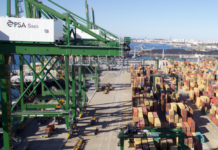The current differential in the cost of a tonne of Low Sulphur Fuel Oil (LSFO) and High Sulphur Fuel Oil (HSFO) averages about US$60/tonne, in Singapore, Fujairah, Rotterdam and Houston, compared to an average of US$350/tonne at the beginning of 2020, which has impacted the payback time for scrubber retro-fits.


“Looking at today’s bunker Forward Freight Agreements (FFA), indicate that the future spread could gradually widen in 2021 and push up the spread towards US$100/tonne,” a container market expert told Container News.
These numbers suggest that scrubber retrofitting for the next 12 months is likely to continue to attract bigger and newer container ships for scrubber investment.


This has been the pattern so far, with the ships that consume the most fuel being scrubbered first, which is the obvious strategy here.


The market analyst explains a simple payback calculation, assuming that
- a scrubber could cost a US$3.5m to purchase and install,
- assuming that HSFO is priced US$300/tonne,
- vessel time at sea averaging 70%
- Assumption for this graphic that the fuel consumption is 120t and 50t per day
The numbers at the moment suggest that big ships will continue their scrubber reftrofit programmes in 2020/21 and for smaller-tonnage burning less fuel, the investment strategy will have to be a more longer-term and considered decision.




